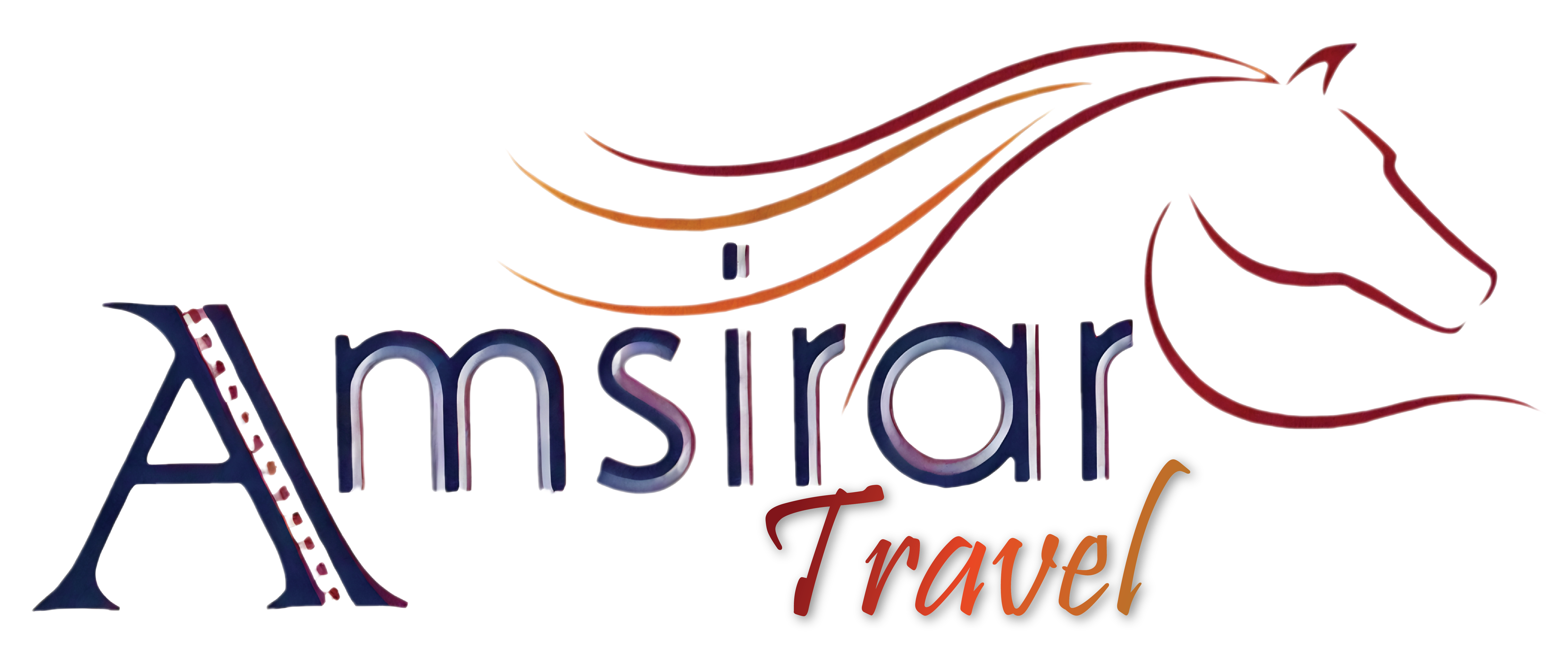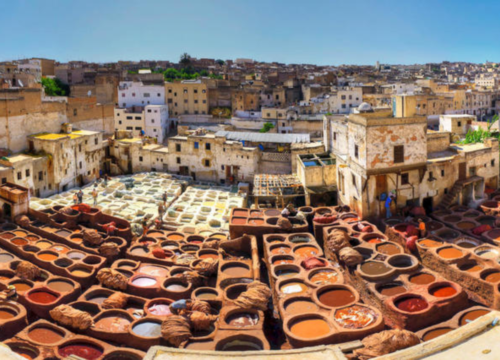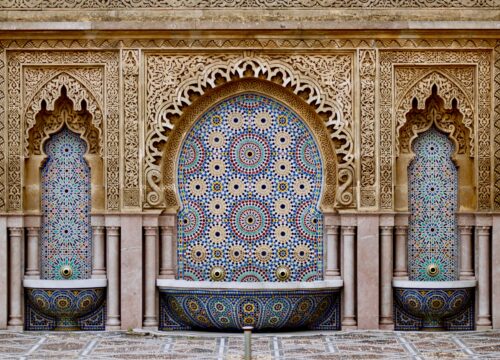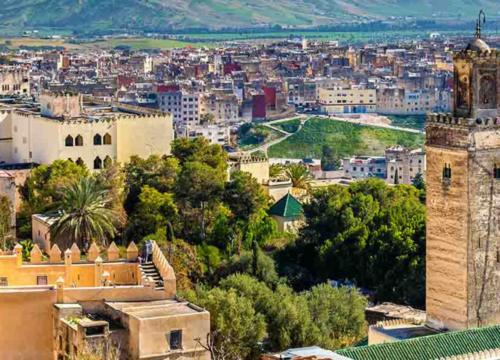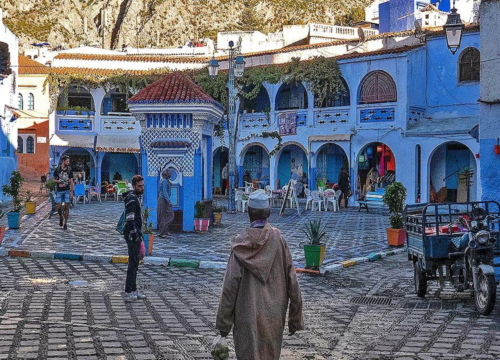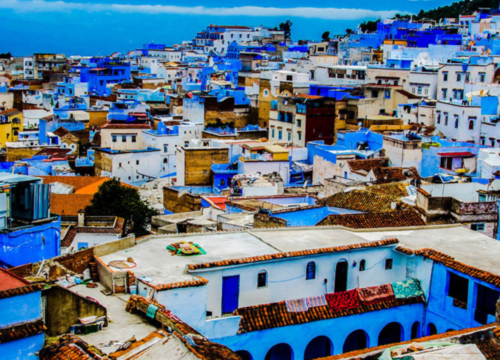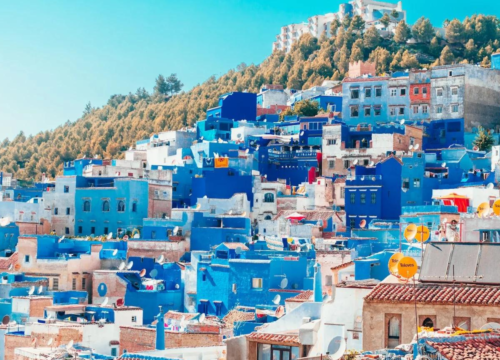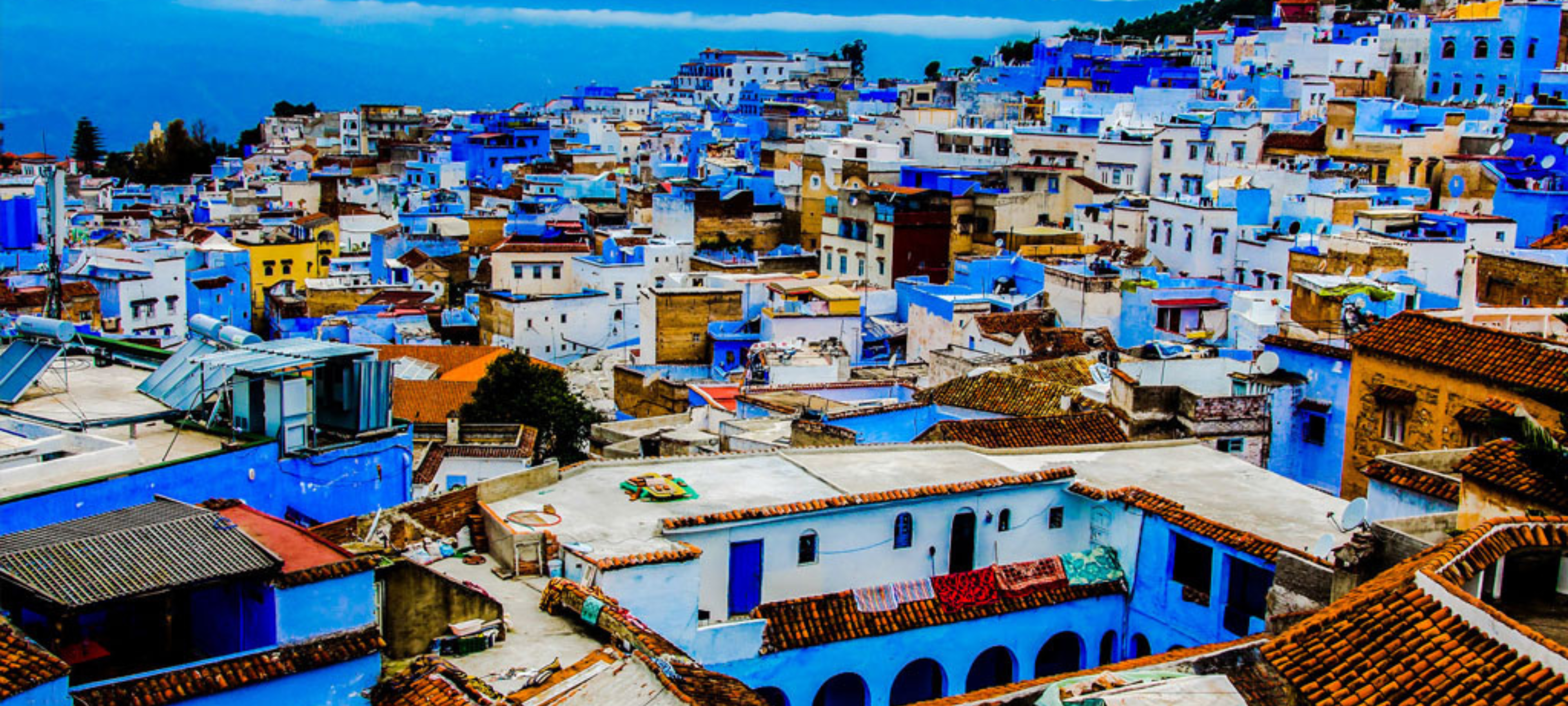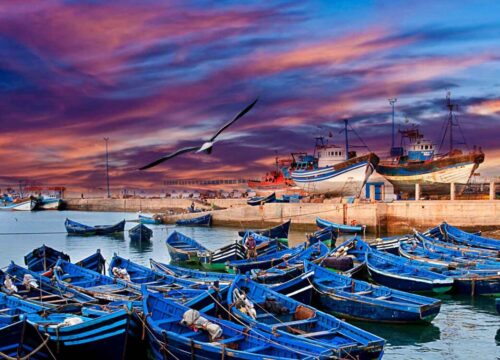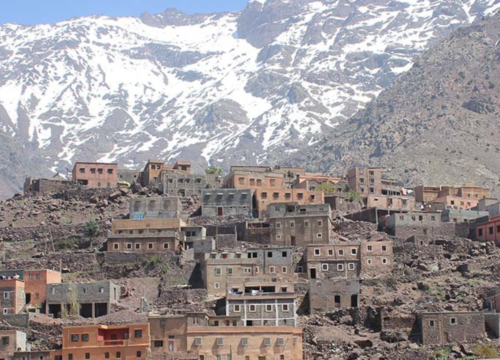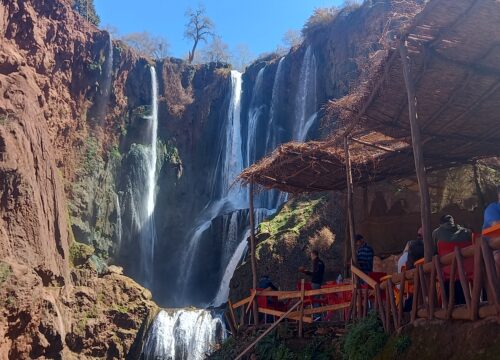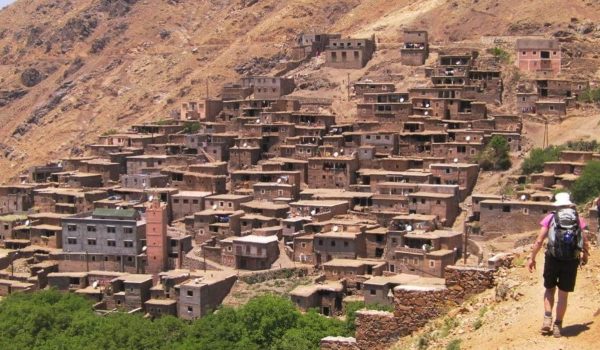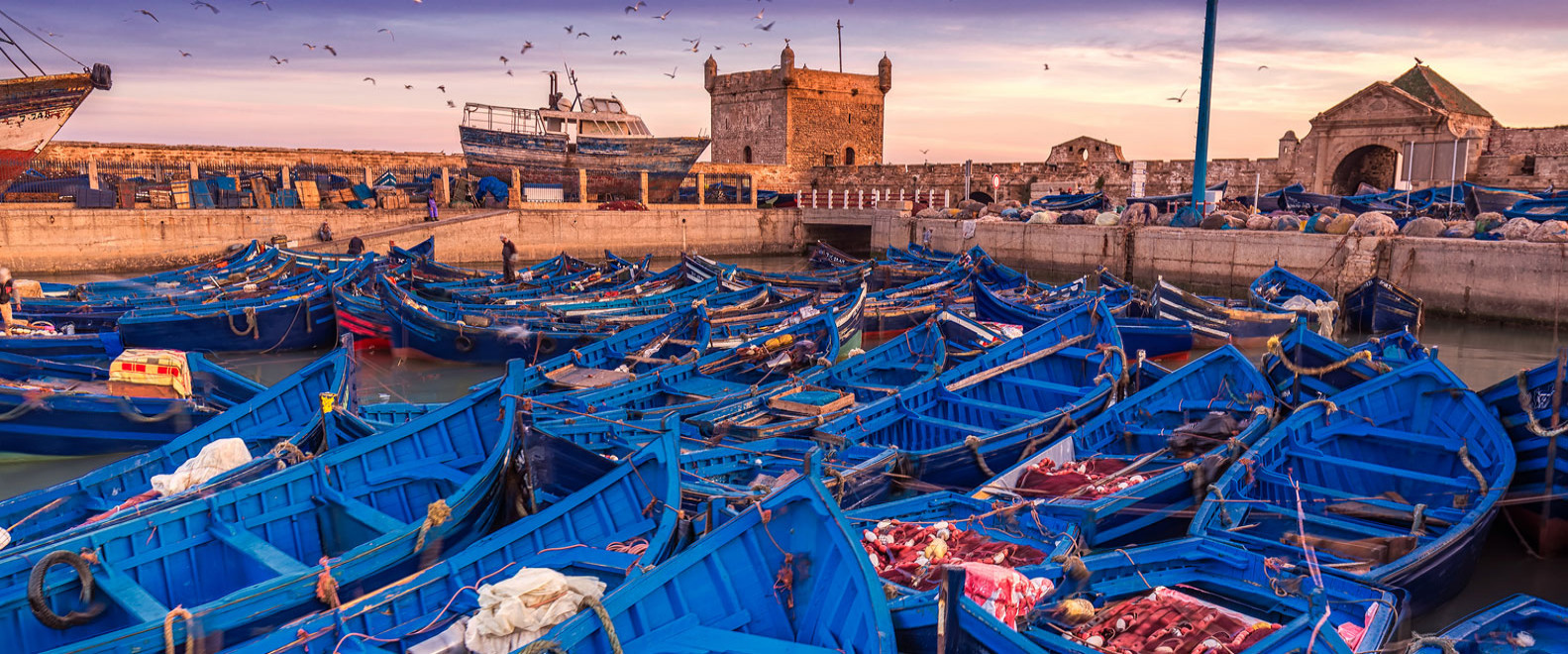3 Days Tour from Fes to Chefchaouen
From
Duration
Tour Type
Explore Tours
Overview:
Enjoy 3 Days Tour from Fes to Chefchaouen discover the amazing villages of the Rif Mountains with their landscapes and visit the blue pearl city which is Chefchaouen, get to know their cultures, and spend your great night in the beautiful hotel, the second day will let you discover the Chefchaouen from the high peak of the mountain, you will enjoy the nature. On the third day, we will come back to Fes.
Info:
- Duration: 3 Days & 2 Nights
- Departure: 9:00 am
- Starting Location: Fes
- Ending Location: Fes
Highlights:
- Drive through the Rif mountains
- Enjoy the landscapes
- Spend your great night at a beautiful hotel
- Visit The blue pearl of Chefchaouen
- Get to know the cultures of the city
- Explore the Chefchaouen from the high peak of the Mountain
Places to see on your 3 Days tour from Fes to Chefchaouen
Fez or Fes:
The city of Fez is in the northern part of Morocco, at the foot of the Maghreb hills 350 m from sea level. Fez is always considered one of the most important imperial cities for history and culture, and that is why the things to see are many and different. In addition, Fez plays a key role in the history of the country. In fact, it is the oldest of the four imperial cities.
What to see in Fez?
The imperial city of Fez offers many things to see and the discovery of the city will keep you busy for at least three or four days. The city is divided into three parts, Fès el Bali or the Medina of Fez, Fès-Jdid or New Fez, home of the Mellah, the Jewish Quarter, and the Ville Nouvelle, the recent French expansion.
The ancient medieval fortified city of Fes el Bali, the largest and best preserved in the Islamic world, declared a UNESCO World Heritage Site, is a maze of narrow streets lined with shops, stalls, and numerous fountains. To enter the Medina, cross the Bab Boujeloud gate, magnificent with its blue and green majolica, and continue towards the Madrasa Bou Inania, among the most beautiful religious buildings in Morocco open to non-Muslims, and the Tanneries of Fez.
Tanneries in Fez
The Tanneries of Fez, or Chouara, with their pungent smell, the huge stone tanks full of pigment, and the skins stretched out to dry one after the other, are famous all over the world.
The medieval tannery district of Fez is a must-see if you are visiting the oldest of Morocco’s imperial cities. Here are still used processes used in the sixteenth century, when Fez has established itself as a leader in their production, to treat the skins of cow, camel, sheep, and goat.
Medina of Fez
Founded in the 9th century, the Medina of Fez consists of two distinct cities, Fes el Bali and Fes el Djedid, It is one of the largest and best preserved medieval fortifications in the world and has been declared a World Heritage Site by UNESCO. The Medina is also the main attraction for tourists visiting the oldest of Morocco’s imperial cities.
Mellah, the Jewish Quarter
In the heart of the medina of Fez el Jedid, near the Royal Palace, is the old and traditional Jewish quarter of Mellah, which was created in 1438 thanks to the Marini dynasty and has been the residence of the Jewish community for centuries.
Some important architectural elements distinguish this area from those of the Muslim community, such as the outdoor balconies with railings that decorate the facades of the buildings. In Moroccan houses, the windows are only facing the courtyard, the riad, the nerve center of the house.
Bab Boujloud, the blue door
Considered the most beautiful gate of the Medina of Fez, Bab Boujloud is a majestic monumental entrance decorated with glazed ceramic tiles, blue on the outside and green on the inside, according to the Moorish – Andalusian style. The door also has 3 horseshoe-shaped arches through which you can see two minarets.
This entrance is relatively recent compared to the surrounding area and in fact, was built only in 1913 by General Hubert Lyautey, well 1000 years after the Medina, and went to replace the original of the twelfth century still visible next to it.
Al-Karaouine Mosque and University
The ancient Al-Karaouine Mosque, incorporated into the ancient Karaouine University, is one of the oldest in the Western Muslim world having been built in the heart of the Medina of Fez in 859. Until the construction of the Hassan II Mosque in Casablanca, the Karaouine Mosque was the largest in Morocco.
Richly decorated, the Karaouine Mosque is the result of centuries of work ordered by each sultan, with a strong influence of the Marinid dynasty in the thirteenth century, has 16 naves and recalls that of Cordoba: The main features of this imposing building are an open-air courtyard with a large fountain in the center, a smaller fountain on each side and the prayer room decorated with stucco and Kufic, the ancient Arabic calligraphic form.
Madrasa Bou Inania
If you are on holiday in Fez you cannot miss the Madrasa Bou Inania, one of the few Islamic religious buildings open to non-Muslims. The newly renovated complex includes a student residence, a mosque, and an Islamic school. Built in the second half of 1300, the complex is considered among the most beautiful in Morocco thanks to its rich decoration that includes an inlaid interior of cedar, zellige tiles, and a marble entrance courtyard.
This monument, which has a twin building in Meknes, is an important example of Marinid architecture and was finished by Abu Inane, the last sultan of the dynasty. The complex consists of a large courtyard surrounded by porches whose walls are decorated with floral and geometric patterns and carved stucco.
Chefchaouen blue pearl:
The blue pearl of Morocco is an enchanting destination that will thrill fans of history, hiking, food, and shopping. Impossible not to love Chefchaouen!
Chefchaouen is adorable. period. Everyone loves it: even those who came here fearing to find a hyper touristy and overrated city, much less interesting than his fame does not make you believe, ended up falling madly in love.
It really is one of the most beautiful cities in northern Morocco, and probably all of Morocco.
Located at the foot of the rugged mountains of Rif is a cascade of houses with blue walls harmoniously inserted in a beautiful natural landscape.
A paradise for photographers and Instagrammers, who at every corner find the ideal glimpse for a breathtaking shot or the perfect background for stories that attract followers.
What to see in Chefchaouen?
The main attraction of Chefchaouen is the medina: splendid as a whole, it is also the area within which the most interesting buildings of the city are concentrated.
However, there are also things to see outside the walls of the medina.
Here are the must-see attractions in Chefchaouen, inside and outside the old town.
Uta el Hamman Square
Uta el Hamman Square is the heart of the medina of Chefchaouen, towards which converge the main streets that run through the labyrinthine old city.
This elegant paved square is lined with bars and restaurants and is the ideal place to take a break while sipping a mint tea or enjoying a tajine. In the evening, almost all tourists flock here, but the atmosphere remains much quieter than the Jemaa El-Fna in Marrakech!
Kasbah
Among many blue buildings in Chefchaouen stands out a building in salmon-colored stone: it is the Kasbah, a fortress surrounded by walls built between the fifteenth and sixteenth century by The founder of this blue city, Molay Ali Ben Mossa Ben Rachid El Aalami.
This small but charming Andalusian-Maghreb building has 11 towers; you can climb to the top of some to admire a beautiful view of the city and its surroundings. Within its walls is a cool garden. The fortress is now home to the Ethnographic Museum and a small art gallery.
Grand Mosquée
We owe the kasbah to the founder of Chefchaouen, but his son bequeathed us the Grand Mosqué: it is characterized by an octagonal minaret, a form that reflects the influences of Andalusian architecture. Also in this case it is not the blue color of the building but the neutral tones of beige and brick.
Bab el Ain
The Bab el Ain gate is one of the main entrances to the medina and is located along the southern side, not far from a large cemetery. The imposing terracotta façade has a small arch from which you can enter the medina and windows at the top.
Spanish Mosque Bouzâafar
It is worth moving two kilometers from the medina to admire another of the city’s architectural wonders: the Spanish Mosque. Perched on a hill, this mosque built in the 1920s by the Spanish is extraordinarily evocative. It never met the favor of the local population, who frequented it very rarely, and soon fell into disrepair; recently, however, it has been restructured. Being a mosque not in service can also be visited by non-Muslims. Take the opportunity to take a look inside, then get out and look at the city: the Spanish Mosque is one of the best viewpoints in Chefchaouen. It can be reached on foot with an uphill walk of about 45 minutes.
Ras el-Maa waterfall
Those who do not want or do not have time to trek an extra day in the Rif mountains can enjoy nature with a walk from the center of Chefchaouen to the waterfall formed by the river Ras el-Maa.
Do not expect jumps from impressive heights: this waterfall is actually a set of small waterfalls that form jumps of a few meters (the highest reaches 5 meters) But it is nice to see through the context in which it is inserted: a green corner near the walls of the medina.
Being not very far from the center – it is located just beyond the northeastern gate of the medina – you can easily walk.
It is perfect for a change of scenery when the blue starts to fill you and the narrow streets of the old town start to give you claustrophobia.
Included/Exclude
- Pick up and drop off at your accommodation
- Private transport with A/C
- Driver/guide
- 2 Nights in Chefchaouen with breakfast included
- Drinks
- Lunches
- Dinners
-
Flight Ticke
- Entrance fees to monuments
Tour Plan
In the morning about 10:00 am / 9:00 am we’ll start Our 3-day tour from Fes to Chefchaouen through the Rif mountains with its landscape and the fertile soil, we’ll see a large nature and ground with lakes then after we’ll have lunch in the Motel Rif, it’s a restaurant in our way where many people are taking their relaxing and foods here after we finish our lunch we continue the way via landscape and Rif mountains to our place which is Chefchaouen, this city is famous with its blue walls were painted with blue color and also they are making trading with their culture-traditions, they have painted their walls with blue color to keep mosquitos away from the city. We’ll arrive in the afternoon you’ll feel tired then you’ll relax at the hotel/riad even the sunset arrive you can walk a little to explore it, and spend a night.
In the morning actually, after breakfast I’ll take you to explore the best mosque on the top, it’s the only one exists on the top of the mountains we’ll see all the city also we’ll explore it then taking some pictures and a coffee to relax time on the top, after 2 hours or 3, we’ll drive down to go inside the city by walking, discover some clothes and hats, some dishes and the famous thing too, we’ll have lunch at the traditional restaurant after that we’ll go back to the hotel, you’ll relax your time even tomorrow arrives, then spend your night with the best experience.
We’ll drive back to Fes with our tour experience, also we’ll take the way that we took when we went to Chefchaouen, we’ll stop a few moments to take a coffee and relaxing and also if someone needs WC, then we’ll continue our way to Fes. Here’s our last day, and the end of the Fes to Chefchaouen 3 day tour.
Make Reservation
Related Tours
Review Scores
Make Reservation
Booking Tour
Latest news & articles from the blog
Trekking in Imlil: A Gateway to the High Atlas Mountains and
Read More »
Located on the Atlantic coast of Morocco, Essaouira is a charming
Read More »
Tucked away in the heart of northern Morocco, Chefchaouen is a
Read More »
